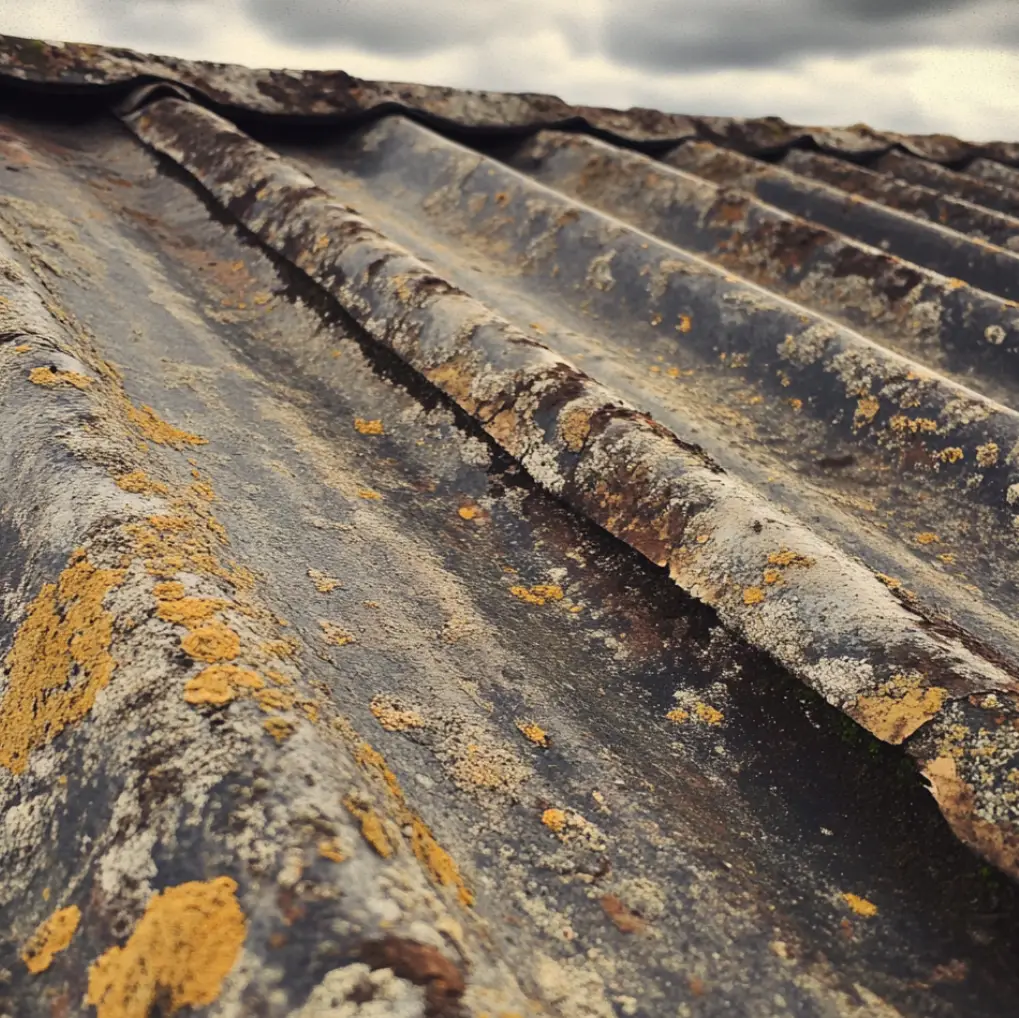*Updated June 2025
Recognising when to replace an asbestos garage roof is essential for protecting both your property and health. Asbestos roofs degrade with age and exposure, releasing harmful fibres that pose serious health risks.
It’s crucial to replace fragile asbestos before harsh weather hits. Read on to learn why.
This guide outlines the key warning signs indicating it’s time for removal and replacement, while our assessment tool lets you assess the potential risk is seconds.
Roof Replacement Assessment Tool
Worried about the condition of your asbestos garage roof? This simple assessment tool helps you determine how urgent it may be to replace your roof. Answer a few quick questions, and the tool will provide a risk level based on your responses.
Assess the Condition of Your Asbestos Roof
Answer the questions below to assess the urgency of replacing your asbestos roof.Disclaimer: This tool is for guidance only and does not replace professional advice.
When Should You Replace Your Asbestos Garage Roof?
Cracks, Holes, and Fraying
Over time, your asbestos garage roof may exhibit physical signs of wear, such as cracks, holes, or frayed edges. These structural weaknesses can release harmful asbestos fibres into the air, posing a serious health risk. If your garage roof appears visibly damaged, prompt action is necessary to prevent exposure.
⚠️What to Look For
- Cracks or breaks in the roofing panels.
- Fraying at the edges or corners of the sheets.
- Scratches or abrasions from weathering or impact.
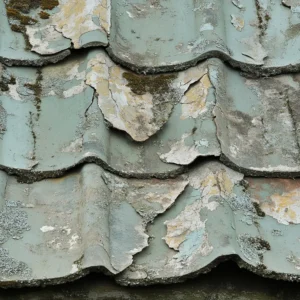
Colour and Staining
Discoloration or staining on your garage roof often signals water damage or mould growth. Moisture can degrade the asbestos-cement material, making it more friable and prone to fibre release.
⚠️What to Look For
- Unusual yellowing, dark patches, or rust stains.
- Moss or lichen build-up indicating moisture retention.
- Persistent dampness in or around the garage.
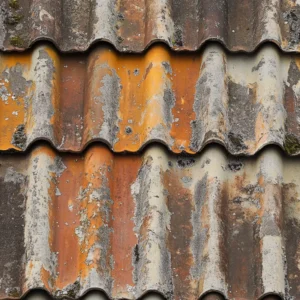
Sagging or Warping
A sagging or warped roof is a clear indication of structural instability. Prolonged exposure to moisture or natural aging can cause the roof to weaken and lose its shape. This compromises the integrity of the material and increases the likelihood of fibre release.
⚠️What to Look For
- Uneven roof lines or visible depressions.
- Areas that appear to dip or sink under pressure.
- Signs of potential collapse in extreme cases.
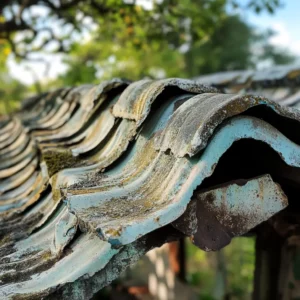
Flaking or Powdering Surface
One of the most hazardous signs of asbestos degradation is surface flaking or powdering—known as friability. When asbestos becomes friable, its fibres are more likely to become airborne.
⚠️What to Look For
- Powdery residue or flakes on the roof or surrounding area.
- Noticeable deterioration of the roof’s surface.
- Increased debris after periods of heavy weather.
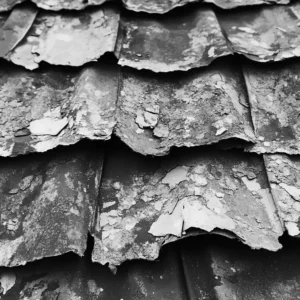
Leaks and Water Infiltration
A leaking asbestos garage roof isn’t just an inconvenience; it’s a warning sign that the material is compromised. Water infiltration weakens asbestos-cement sheets and raises the likelihood of hazardous fibres being released.
⚠️What to Look For
- Persistent leaks or water stains on garage walls and ceilings.
- Puddles or damp spots after rainfall.
- Mold or mildew forming inside the garage.
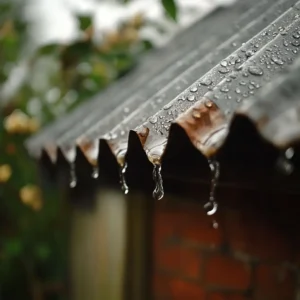
Dust and Debris in the Garage
Dust or debris accumulating inside your garage could be a sign of asbestos material breaking down. Even small fragments pose a significant risk if fibres become airborne, making this a critical warning sign of roof degradation.
⚠️What to Look For
- Fine white or grey dust around the roof area.
- Small fragments of asbestos-cement material on the floor.
- A noticeable increase in dust levels over time.
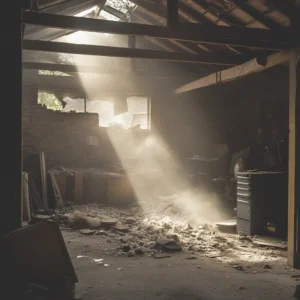
Age of the Roof
If your garage roof was installed before 2000, it’s likely nearing or exceeding its lifespan. Asbestos-cement roofs typically last 30 to 50 years, after which they become prone to degradation.
⚠️What to Look For
- The roof is over 20 years old, even if it appears intact.
- Regular inspections indicate increasing signs of wear.
- Proactive replacement to prevent sudden fibre release.
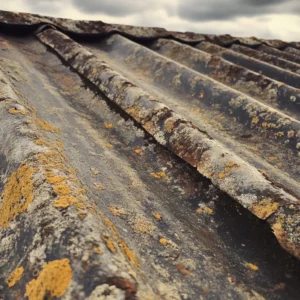
Professional Inspection: A First Step Toward Safety
Sometimes, the signs of asbestos roof deterioration are not immediately visible. That’s why engaging a licensed asbestos surveyor is crucial. A professional inspection ensures that no underlying issues are missed, such as internal structural damage or micro‐cracks that could lead to fibre release. Experts can determine whether disposal, repair or full replacement is the most effective and safest solution. With modern technology, some inspections can take place remotely, with AI and digital maps allowing the inspector to take a look at the property without visiting in person.
A professional inspection is especially important during:
- Weathering assessments: Ensuring seasonal weather hasn’t exacerbated hidden vulnerabilities.
- Health risk evaluations: Identifying airborne fibre risks you might not detect on your own.
- Legal compliance checks: Ensuring your property meets UK asbestos safety standards.
Get in touch with us today for expert advice or a personalised quote. Protect your property and ensure peace of mind with Excel Asbestos.

